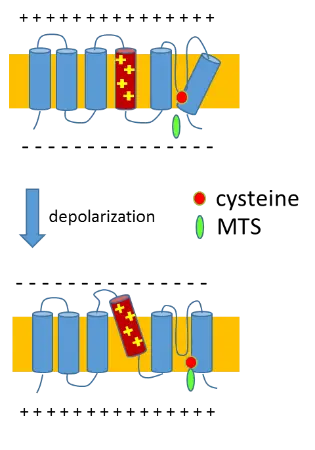Kv10.1 is a Kv channel, which is only found in certain cells of the brain in humans and whose genetic mutations may cause epilepsy. It is also found in most tumors and has an important role in the proliferation of cancer cells. The inhibition of this channel by genetic methods or blocking compounds effectively suppressed the growth of various tumor types. Based on these properties it can be considered an excellent drug target, but currently it has no known efficient and specific blockers. The efficient design of drug molecules requires the detailed knowledge of the molecular structure and the shape changes that take place during channel operation. Our goal is to locate the exact position of the internal gate of the channel, which would supply useful information about the size and accessibility of the pore to aid drug design.

Figure: The location of the gate can be found by using MTS reagents that irreversibly bind to cysteine residues introduced into the channel sequence at specific locations. Binding of the MTS inhibits the current through the channel. The accessibility of the cysteine to MTS in the open or closed state of the channel gives information about location of that residue position.